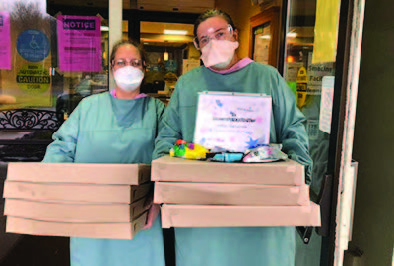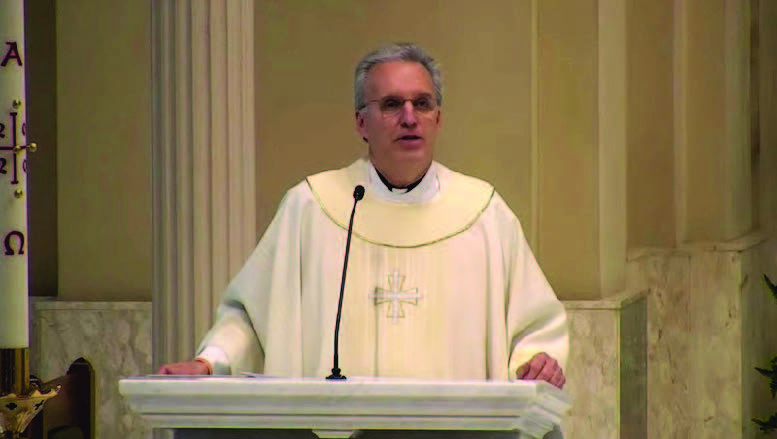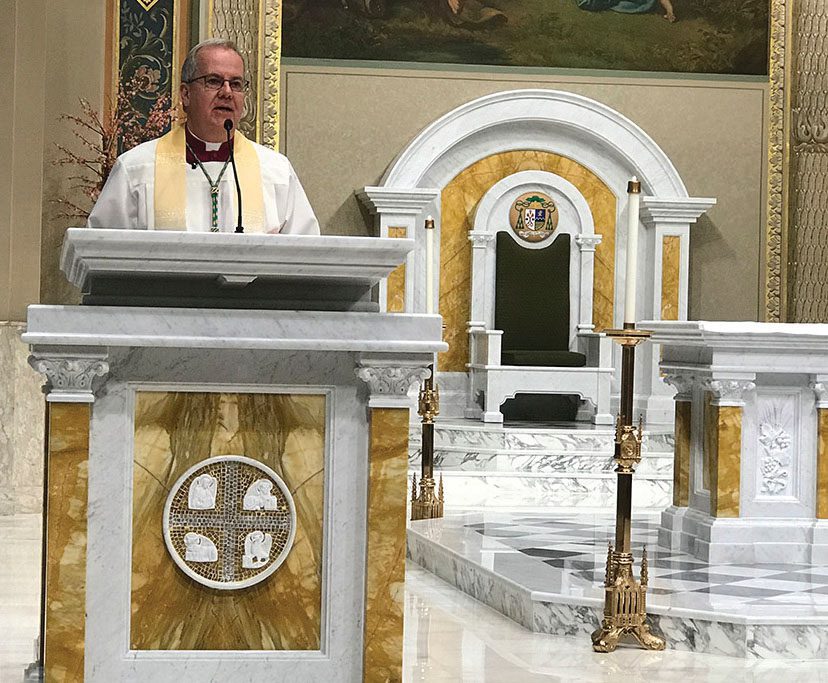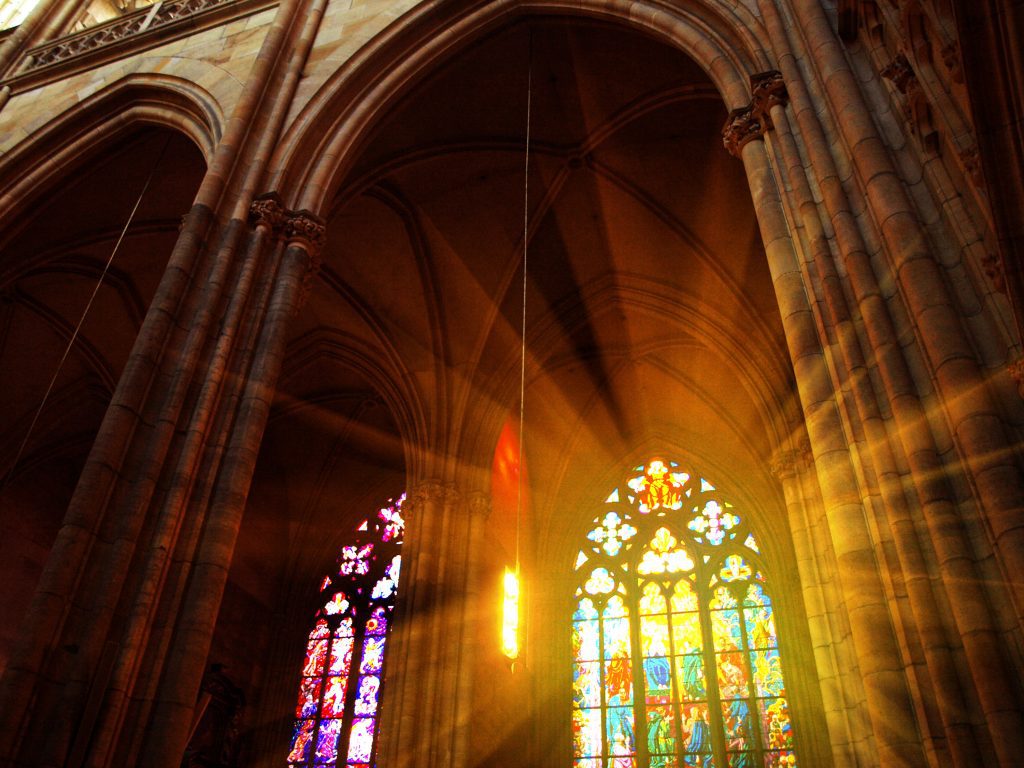
MUNCY – Resourceful, caring and charitable individuals from Catholic parishes across the Diocese of Scranton have responded earnestly to a pressing need that only a global pandemic can create – personal safety masks. As the calendar turned to 2020, it was unthinkable that facial/surgical masks, once only associated with doctors, nurses and healthcare workers, would now be a required commodity for anyone wanting to venture outside their home to guard against an insidious, invisible enemy. When the coronavirus outbreak became a real concern in March, Lynn Pryor of Church of the Resurrection in Muncy, Lycoming County, began her mission to find some way to help others during the pandemic. Her quest ended when she read an article about a hospital reaching out to the community to help make essential, but extremely scarce, N95 masks for staff members.
“I explored websites and found patterns that met the CDC guidelines and starting making masks,” Pryor said. “I wrote to one woman to offer help with masks for nursing homes she was sewing for in Williamsport.” After creating about 15 masks to help the cause, Pryor said the woman urged her to continue her efforts and donate them to as many people in the area as possible. She immediately sought out a parish friend, Pat Merrifield, who is a nurse at the nearby Geisinger Infusion Clinic.

“(Pat) told me that the staff had masks, but many of the patients didn’t,” explained Pryor, “so I started to make them for the patients.” Thus her mask ministry was born. By early April, the Muncy mask maker contacted the Women’s Organization at Church of the Resurrection Parish looking for some much needed help. Several women responded, including experienced quilters Joann Ort and Teri Snyder. Others like Nan Rusczak and the parish pastor, Father Glenn McCreary, donated materials.
“At that point,” Pryor recalled, “we really got going and have made several hundred masks so far.” In addition to the Infusion Clinic, mask recipients have included family members, neighbors and friends, particularly older members of the Resurrection community.
“While making these masks I often think of the patients and the staff who will use them and of their love and courage,” Ort commented. “They are certainly in our hearts.” Merrifield is very thankful for all of the masks that were provided for home-infusion patients who would normally be receiving their vital medications in the hospital. “These patients accept the masks with so much gratitude,” she said.

“Some get quite emotional. Thanks to those at the Church of the Resurrection for these wonderful gifts of mercy!” The Muncy mask ministry is now preparing for the opening of Diocesan churches and the public celebration of Masses, when masks will be required for all faithful in attendance. “During this pandemic, I know many people wish to do something and would love to help from the safety of their own homes,” Pryor said.
“One of the most needed pieces of equipment is the face mask.” She has graciously offered to assist anyone in joining the effort, including, if possible, picking up finished masks and getting them to where they are most needed. Those interested may contact Lynn Pryor via email at: pry0rla@gmail.com. ‘The MassQueens’ As the spring season ushered in the harsh reality of COVID-19, the “MassQueens Community Assistance Mask Sewing Project” also began coming to life on the other side of the Diocese in its eastern-most region. Ann Mullen and Linda Ross learned valuable sewing skills around the same young age – Mullen from her mother, and Ross from taking sewing classes at North Scranton Junior High School. The longtime friends met years ago as parishioners of Saint Matthew Church in East Stroudsburg, where Ross is a choir member and cantor and Mullen serves as music director and organist/pianist, along with being a member of the music faculty at nearby Notre Dame High School. But it has been their love of sewing that launched their mask making apostolate. According to Mullen, it all began with a somewhat prophetic suggestion by another friend, who upon learning of a new virus on the horizon, sensed an urgent need for safety masks. “I really didn’t take her seriously until about a week after she said this,” Mullen recalled. “Then it became apparent that wearing masks would become a way of life, essential to health and safety.” Well known for her sewing abilities, Mullen received her first request from a friend whose daughter is on staff at a hospital in Allentown. Her department was suddenly in need of 50 masks due to the pandemic.
“No sooner had that request been fulfilled, then mask requests for essential workers and service personnel started pouring in,” Mullen said. “When I got a request for 300 masks from another friend at Lehigh Valley Hospital in East Stroudsburg, I knew I would need help.” Enter Linda Ross, who responded to her friend’s desperate plea with a resounding “Yes!”
“We both wanted to do whatever we could to help the community during a time of crisis,” said Ross, “and since we both sew, the mask making was the perfect fit for us.” Early on in the project, the duo began referring to their charitable enterprise as “The MassQueens” – giving a nod to their Catholic Church affiliation while describing their mask making commitment. While working from their homes, Mullen and Ross comprise the sewing portion of the operation; however, they have received much behind-the-scenes support from numerous friends from the Saint Matthew’s community as well as local Immaculate Heart of Mary Sisters. With the creation and donation of more than 1,600 masks – and the number continually rising – the list of beneficiaries from the project is quite lengthy. Grateful recipients of the MassQueens’ handiwork include healthcare providers, emergency responders, police departments, cafeteria workers, homes for the elderly, local businesses and clergy.
“This is and has been such a fulfilling adventure for both of us,” Mullen offered. “We feel that we have been called to make use of our God-given talents to do something positive that will make a difference to those around us.” Despite having worked tirelessly for more than fifty straight days to fill mask requests, the MassQueens are prepared to continue their commitment to the community for as long as it is needed.

 More than 600 parishioners and friends have made gifts to the Coronavirus Emergency Fund established by Bishop Joseph C. Bambera to help support public ministries, parishes and Catholic schools during the COVID-19 pandemic. A total of $130,000 has been raised so far: $40,000 for parishes, $50,000 for kitchens, food pantries, shelters and relief assistance, $14,000 for Catholic Schools and $26,000 to be used where it is needed most.
More than 600 parishioners and friends have made gifts to the Coronavirus Emergency Fund established by Bishop Joseph C. Bambera to help support public ministries, parishes and Catholic schools during the COVID-19 pandemic. A total of $130,000 has been raised so far: $40,000 for parishes, $50,000 for kitchens, food pantries, shelters and relief assistance, $14,000 for Catholic Schools and $26,000 to be used where it is needed most.

 “God is calling, even in the midst of a global pandemic.”
“God is calling, even in the midst of a global pandemic.”

